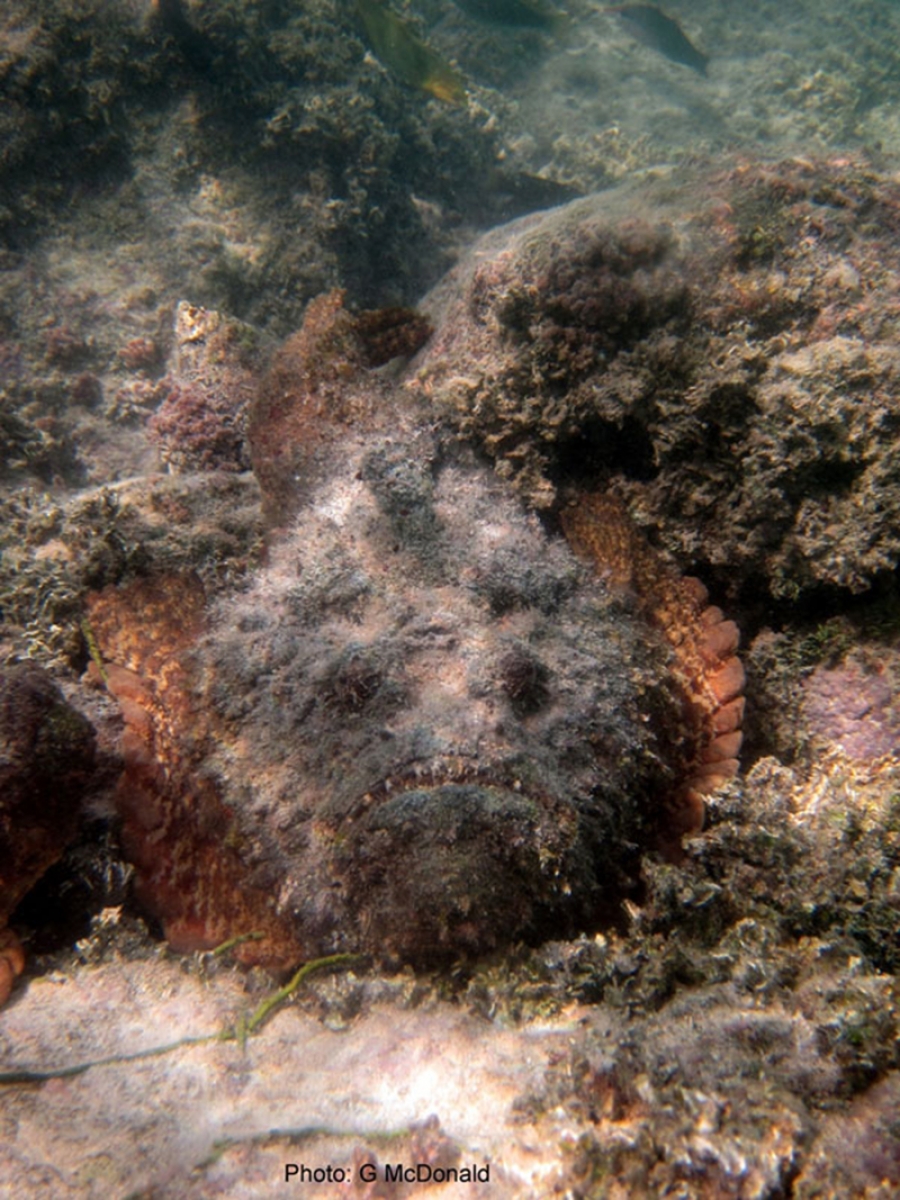11 stonefish poisoning cases so far
Saturday 14 October 2023 | Written by Losirene Lacanivalu | Published in Health, National

Stonefish blend in perfectly with their surroundings and are hard to spot. The pain from their venomous spines can be excruciating.
There have been 11 stonefish poisoning cases reported at the Rarotonga Hospital since January 18 this year. This was confirmed by the outgoing director of hospital health services, Dr Yin Yin May.
Dr May also confirmed that two boys were taken to the hospital on Thursday and there was no systemic effect apart from pain on their wound site. She also added that unfortunately there is no anti-venom provided at the hospital.
The parent of one of the boys stung by the stonefish at Avarua Harbour, near Trader Jacks, said the two boys were getting better.
Jakub Postrzygacz has called on the public to keep children away from the Avarua Harbour area for the time being.
Postrzygacz said all he knew was the basic first-aid. He said stonefish venom is protein-based, so putting a mixture of white vinegar and the hottest water the victim can handle on the affected area helps ease off the pain a little bit.
“Proper first-aid includes administration of anti-venom which can be life-saving in serious cases. Unfortunately it is not available in Rarotonga … Kids are always told never to step on the rocks and coral because stonefish are virtually impossible to distinguish from them. “
He added: “This accident happened in the shallow water with sandy bottom but the murky water made it impossible to see what’s under the surface. Avarua harbour is a very popular location for swimmers, paddlers and other water sport enthusiasts, so it’s hard to keep us all away from there.”
According to a previous article from the Ministry of Marine Resources, stonefish inhabit the shallow tropical marine waters of the Pacific and are common in the lagoon around Rarotonga. They use camouflage to hide among coral reefs near rocks or lie dormant in the mud and sand.
There has been one case each reported from January, except two cases reported in July and this month so far.












































